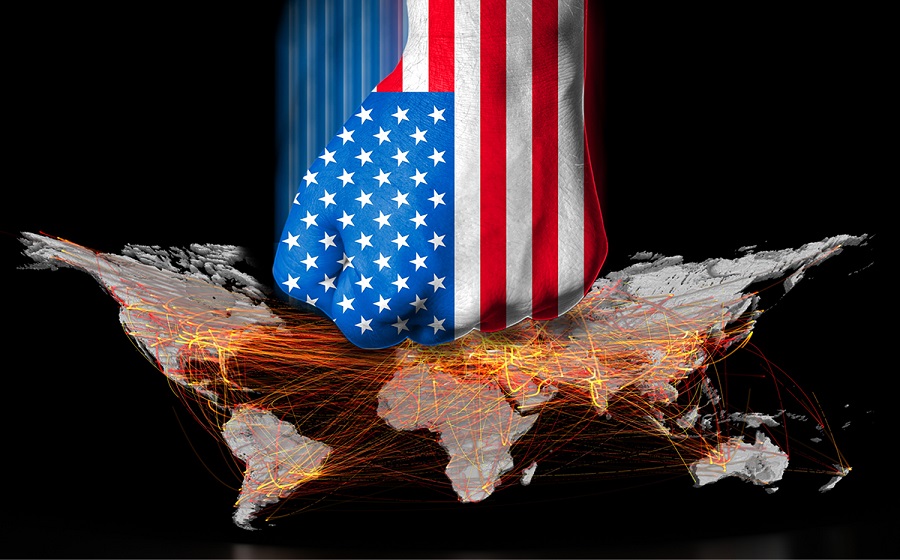Everybody’s got skin in the game when it comes to international trade. Some are just a little more thin-skinned than others. Now we’re going to find out who and how much it’s going to cost retailers and the American consumer as tariffs on an array of imported goods continues. Reciprocal tariffs are nearing reality and tensions between long-time trading partners are approaching the boiling point.
In the chaotic, crazy quilt world of global trading, there have always been winners and losers. Even before the bombastic rhetoric of the imperial presidency, the U.S. had few checkmarks in the win column and trade deficits continued to escalate. The “made in…” label, as ubiquitous as it might seem, became a rallying cry for some American industries, political xenophobes and assorted crazies.
Digging Deeper
Over the years the U.S. has been taken advantage of. But are double-digit tariffs imposed on our largest trading partners and allies, and the prospect of retaliatory import duties, the way out or a hole that’s only going to get deeper?
This is certainly not a new problem nor instantly solvable with the wave of an edict. This is an issue that goes back decades to the beginnings of what might be called the American Domino Theory. Oddly enough the phrase goes back to the Vietnam War era when proponents of the war espoused the theory that if the country were to go communist the rest of Southeast Asia would fall too. For decades the theory has been applied to American industry.
We gave away supremacy in the auto industry when Detroit stayed blind to consumer demand for smaller cars — enter the Japanese. We lost the steel industry when China got its foot in the door by manufacturing rebar — the cheap stuff that no else one wanted to produce. We gave up the textile, apparel and furniture businesses to the entire Asian peninsula when wages overseas were too low to ignore and U.S. wages got a little too high to be palatable. And let’s not forget the outright theft of intellectual property.
Economic Downturn?
Which brings us to 2018 and the little Passion Play that’s being performed by administration officials, which could, in the view of some economists, trigger an economic downturn. Similar policies were instituted by Congress in the 1930s that only served to lengthen and deepen the Great Depression.
Others believe a widening trade deficit is not about tariffs and duties but the result of a stronger U.S. dollar over the past several years, which boosted demand for lower-priced imports — particularly from China. In fact, Bloomberg News has reported that the trade deficit with China reached a record $375 billion in 2017.
And to prove that inflammatory rhetoric isn’t limited to Washington and Twitter, the Chinese ambassador to the U.S. said in an ominous Facebook video that China doesn’t want a trade rollback but, “If people want to play tough, we will play tough with them and see who will last longer.”
Whichever economic theory you subscribe to, it will impact the bottom line of both online and brick-and-mortar retailers. In fact, Bloomberg News reports that Walmart, Macy’s and about 20 other retailers have sent a letter to President Trump urging him to reconsider his stance.
A recent commentary by the National Retail Federation noted that studies conducted in partnership with other trade associations found that tariffs would reduce U.S. gross domestic product by nearly $3 billion and cost 134,000 American jobs. Plus any expansion of tariffs on Chinese goods would lose over 450,000 in U.S jobs and result in a decline of $49 billion in gross domestic product.
In a statement following the administration’s tariff announcement, Matthew Shay, NRF president and CEO stated: “We will continue engaging with congressional leadership and the administration to advocate for an approach that doesn’t negatively impact American jobs, jeopardize economic growth and increase the cost of living for American families.”
Not to be left out, the Consumer Technology Association, which applauded those in Congress for opposing tariffs, warned that a trade war with China could jeopardize nearly 2.5 million tech jobs. “Unfair trade practices must be addressed, but the solution is not to put a new tax on U.S. businesses and force consumers to pay dramatically more to access the technology products they need,” said Gary Shapiro, president and chief executive officer.
Lose, Lose Scenario
A recent report by Business Roundtable, an association of CEOs from leading U.S. companies, says exports could face an additional $15 billion in new tariffs of NAFTA were eliminated. All this will be at the expense of consumers and retailers who wanted to maintain or reduce costs.
In truth, the collective retaliatory tariffs announced by Canada, Mexico, the EU, Russia, India, Japan China and Turkey on U.S. manufactured products are closer to an estimated $40 billion, and are far more strategic than those launched by Washington.
Let’s take all this closer to ground level. If you’re wondering why your pork chops and applesauce are also costing more at the grocery, Mexico Canada and China are already putting restrictions in place including China’s 25 percent tariff pork which, if you’ll excuse the expression, has the National Pork Producers Council squealing. Meanwhile, apple exports to Mexico, which account for about 30 percent of the U.S. crop, are being targeted, despite the fact that NAFTA, is still in effect.
On the building front, 25 percent tariffs on imported steel, while popular with unions and what’s left of the domestic steel industry, is likely to result in even less retail construction as construction materials get more expansive and, perhaps, more scarce.
The good news is that as labor costs in China increase, its competitive edge in world markets narrows. However, this change is not moving quickly enough and is not significant not enough to offset the tariffs China has imposed on over 100 goods from the U.S. — a move that could result in production cutbacks, the loss of U.S. jobs and lower spending by consumers.
Choking Supply Lines
Then what happens when glitches in the supply chain cut the flow of goods? Not to be an alarmist, but empty shelves in stores or warehouses are an anathema to most retailers. Those companies with contingency plans in place, including online retailers, are likely to be in better shape if trade talks head further south. Modernization equals efficiency. On the other hand, restrictions on imports and exports might serve to level the playing field between online companies like Amazon and brick-and-mortar retailers, including chains and independent, family run businesses.
There’s a razor-thin line between trade parity and protectionism whether you’re talking about steel, peanut butter or cranberries. And all this could have a significant impact on upcoming elections.
At this point, no one really knows how proposed tariffs will impact business on a broad level, but the controversy gives new meaning to the old phrase “adapt or die.”



